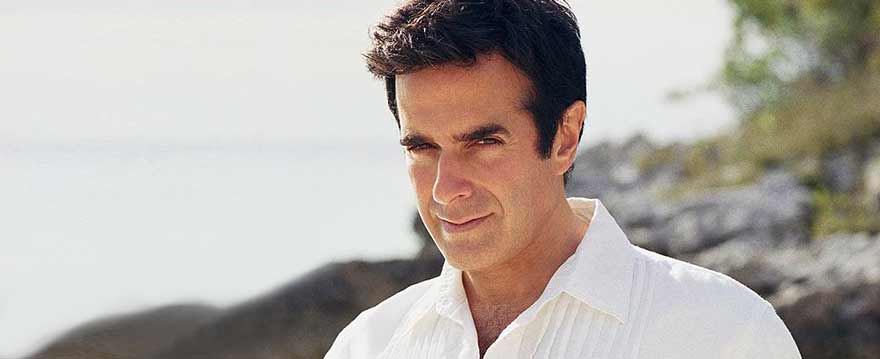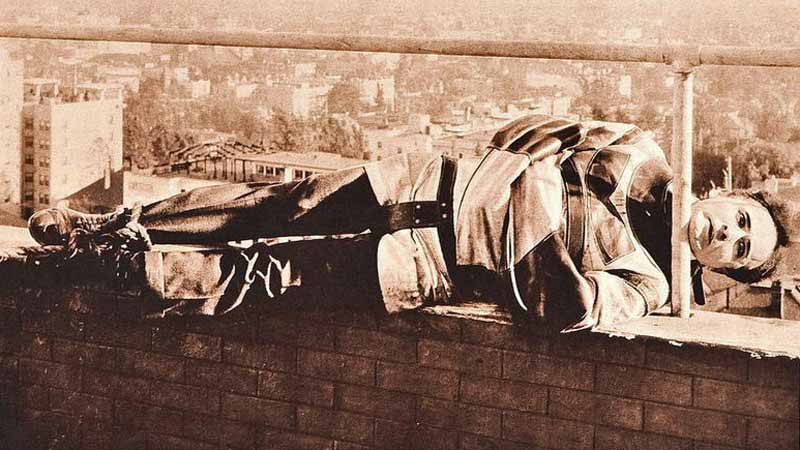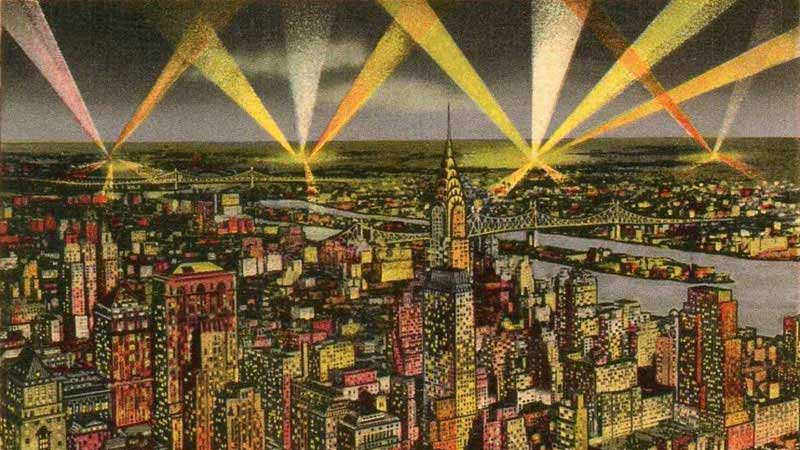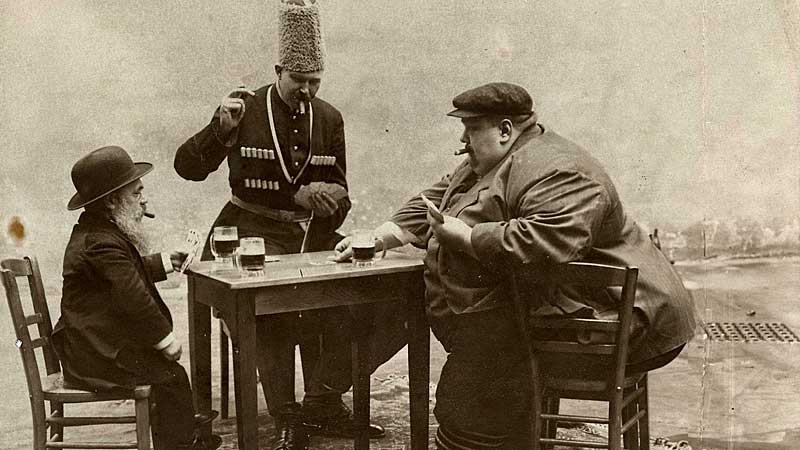TOP 10 BEST David Copperfield's Tricks of all Time
SEE ALSO: Houdini's BEST Tricks
SEE ALSO: BEST Magic TV Shows
ALSO: Houdini's BEST Tricks
ALSO: BEST Magic TV Shows!

Who better to create this specialized "Best of Copperfield" list for you than a UCSD theater Ph.D., magic scholar, university professor, author, and all around smart guy. Sit down in your favorite recliner, put your feet up on that stack of DVDs you don't use any more, grab your chocolate shake, and enjoy...
BEST Magic Tricks of David Copperfield
by Dr. Will Given
University of California, San Diego
David Copperfield has ruled the magic world since the 1970s and for very good reason. Copperfield is never content with performing the illusions we are all familiar with in the same old tired way. Instead, Copperfield presents modern spins on classic illusion concepts to create larger-than-life spectacles. While his show, David Copperfield: An Intimate Evening of Grand Illusion, at the MGM Grand Hotel and Casino in Las Vegas is a big-budget extravaganza with million-dollar illusions, Copperfield works hard to incorporate story into his performances to make the grand illusions more intimate and personal to the spectator. Here are our picks for David Copperfield's greatest magic tricks ever...
-
10. Walking Through the Great Wall of China
For David’s 1986 television special, The Magic of David Copperfield VIII: Walking Through the Great Wall of China, David traveled to China to perform a modern interpretation of an illusion Houdini used to perform on stage where he would seemingly walk through a solid brick wall. David wanted to do his version, however, with The Great Wall of China. While some of the “technology” used to supposedly track his heartbeat as he passed through the wall may look pretty hokey when viewing a clip of the illusion today, the cinematography is actually still very innovative due to the usage of the Louma Crane. What is also quite amazing with this special in retrospect is how David was able to open up China to the West in a way that had not been previously done before and show American audiences the beauty of the country and the people. As an extra bonus, watch David performing a routine with a pearl necklace with an elderly Chinese woman in this special to see some masterful sleight of hand magic.
-
9. Suspended Straightjacket Escape
The suspended straitjacket escape has been a ubiquitous staple of magic ever since Houdini took it to the streets in the early 20th century to perform the feat as a way to drum up publicity for his stage show. In the 1993 special, The Magic of David Copperfield XV: Fires of Passion, David did his version of this trick for a live crowd at Caesar’s Palace in Las Vegas. As is his style, David updated the trick to make it more dynamic and exciting for the audience to see by including large flaming spikes underneath him on the ground below. Oh, and the rope that was holding him upside down from the crane was also set on fire to intensify the drama of an already scary feat to behold. Say what you will about David, the athleticism he displays in some of the large illusions such as this one is amazing.
-
8. Explosive Encounter
What makes David’s large illusions so spectacular to experience are the myriad layers he builds into the stories of each of his performances. Take for example the escape he performs in his 1989 special, The Magic of David Copperfield XI: Explosive Encounter. The goal is for David to escape from inside a locked safe. Sure, this is something that Houdini had performed close to a century earlier, but the safe David is in is placed inside of a building that is set to be explosively demolished. A Steadicam operator films everything in one continuous take, and yes, spoiler alert, the building is actually imploded. David’s reappearance though from a thin steel plate suspended on sawhorses is what actually what makes this illusion simply brilliant. In this video the illusion described here starts at about 37:30.
-
7. Grandpa's Aces
The start of our countdown may be a bit surprising for you. Copperfield isn't always about the spectacle of the grand illusion. There are times, such as with this, the number seven spot on our list, where Copperfield is able to slow things down for the audience to present a bit more intimate of an experience. Some of these moments, where Copperfield is performing close-up magic, can be incredibly moving for an audience. On the surface, Grandpa's Aces appears to be just like any other four-ace card trick – the magician loses four aces in the deck and then makes them reappear. Copperfield brings a story to the trick though that centers on learning magic from his grandpa (keep reading below to see how his grandfather inspired another trick on our list). What really sets this trick apart though is how Copperfield actually handles the cards with a poetic tenderness and grace to help create the very gentle tone of the powerful trick.
-
6. The Orient Express
David Copperfield's television specials were an annual tradition on CBS and his illusions each year grew larger and more impressive. In 1991, Copperfield aimed to vanish a fully restored train car from the legendary Orient Express. Promising no camera trickery, and presenting the illusion in one continuous shot, Copperfield first levitated the covered enormous train car while being completely surrounded by spectators. In a single motion, the large covering fell to the ground and there was no Orient Express train car to be seen. (Jump to minute 1:53 in the video above.)
-
5. Death Saw
The sawing the lady in half illusion is one of the classics of magic. But Copperfield adds a twist and now instead of putting an assistant in the box, cutting her in half, and then restoring her, Copperfield would be the one facing bifurcation. And in full view of the audience at all times. That's right, no assistant and no box. Death Saw combined an escape with the sawing in half illusion. Copperfield would lie face down on a table and be shackled into place. A ridiculously large circular saw blade would be started and would slowly inch its way down a large tower, closer and closer to Copperfield. Could he escape in time? Spoiler alert: no, he could not. He is not able to free himself and the saw cuts right through him. His upper and lower half of his body, still in plain view of the audience, are wheeled away from each other, before he is then reassembled, time is reversed, and he stands up from the table unscathed.
-
4. Statue of Liberty Disappearance
This may be the best-known illusion from all of Copperfield's twenty television specials. For his fifth special, Copperfield set out to pull off the largest disappearance to date. While magicians such as Harry Houdini had previously vanished an elephant, and Copperfield himself had vanished a jet airplane on a previous special, for The Magic of David Copperfield V, Copperfield turned his attention to the Statue of Liberty. On April 8, 1983, television audiences watched as Copperfield presented a spectacular illusion designed by Jim Steinmeyer and made the actual Statue of Liberty disappear in front of a live audience sitting outside and braving the crisp night air on Liberty Island. And I know what you are thinking and no, the audience was not in on the trick in any way.
-
3. Barclay House
The spirit cabinet was a predominate form of magical entertainment in the mid to late nineteenth century and early twentieth century. Carter the Great and The Davenport Brothers were some of the better known acts to do it. Copperfield wanted to come up with his own modern version though. In the Barclay House illusion, Copperfield tells the story of a house of ill-repute that had burned down. He reveals a segment of the house on stage that he has purchased. After inviting audience members up to examine the structure, and to bound him with ropes, Copperfield sits down in the room of the house with an audience member. When the room is covered, spirits manifest and begin to create mischief. Copperfield ups the theatricality though of the standard spirit cabinet by making the audience members who were inside the room of the haunted house disappear.
-
2. Appearing Car
Copperfield uses the story of his grandfather once again in this illusion that is staggering to behold. After telling the story about the memories Copperfield has of his grandfather's dream of owning a Lincoln convertible, Copperfield makes one appear on stage. Out of nowhere. Perched atop posts and elevated above the stage floor so the audience can see completely underneath it. Oh, and it's also surrounded by audience members on stage. What makes the illusion even more breathtaking though is when Copperfield then climbs into the old green convertible, slams the door shut (it is indeed solid), starts the engine, and turns on the headlights. (It seems that since this trick is still in Copperfield's show, it is NOT on the internet so instead, we have included a video of his duck vanish. Another favorite illusion.)
-
1. Flying
The levitation has been a standard of magic since John Nevil Maskelyne mesmerized audiences with it in Victorian England, but sadly, it had become a bit cliché by the second half of the 20th century. Too many magicians had tried to imitate the effect of an individual levitating above the stage floor that it lost a lot of its magical impact on audiences. Even if audiences did not know the methodology, they knew what to expect from the effect. Copperfield changed all of that though in the early 1990s. In Flying, Copperfield tapped into the human desire for flight and instead of levitating an assistant who had been placed in a "trance" as in a standard levitation, Copperfield himself soared up high above the stage. What made Copperfield's illusion revolutionary though was the fact that the levitation did not solely take place on a straight vertical plane, but rather allowed the magician to seemingly fly at will around the stage wherever he pleased. The illusion, designed by John Gaughan, had a profound effect on the audiences who witnessed it, and, still to this day, has been the only time I have ever seen spectators moved to tears by magic.
With so many tricks and illusions to choose from, it is difficult to narrow this list down. Copperfield has so many great pieces to choose from. So, what do you think? Did we get this list correct? Do you have suggestions of what you think are Copperfield's best illusions that we didn't include? Was there an illusion you remember from one of his TV specials you think should have made the list? Write us and let us know.



